How to build your brand on social using brand codes
By: Laura Santillana | Lead Creative
With 90% of accounts following a business on Instagram, the majority of us social-ites are clearly interested in what brands are doing on social. So how can brands be distinctive and stay recognisable throughout our daily scroll-bys?
Social media has been one of the first points of brand contact in 2020, with 52% of online brand discovery happening in public social media feeds. In other words, business accounts should look and act as a homepage for brands, being immediately recognisable and trustworthy - even without a blue checkmark in sight.
But can the restrictions of a grid of photos or list of posts properly reflect a brand in all its glory?
Of course.
However, slapping a logo in the corner of every image isn’t necessarily the answer. Rather, establishing and implementing a set of distinctive brand codes not only helps to maintain consistency and gain trust amongst followers and newcomers, but also creates distinctiveness within the brand category.
What is a brand code?
A brand code is a distinct style or asset unique to your brand. They help to distinguish one brand from the next and make it easier for consumers to recognise your brand, which in turn means they are more likely to use your products and services.
Brand codes have been best described by Mark Ritson as “the things that loyal customers associate with the brand and immediately on encountering them they recognise the brand in question, even when the logo is yet to appear.”
These ownable assets come in many forms of visual cues, whether it be a colour, shape, pattern, font or image – and what makes them recognisable is that they are everywhere that the brand is. So, if a brand is on social – you guessed it – brand codes should also exist in that world.
Every image doesn’t need to be littered with brand codes however, they should be considered carefully and in a clever way. In the same way that constraints inspire creativity, it is possible to reinforce brand codes while being engaging at the same time. Here’s a few of the ways you can build up your brand on social:
Colour
This is probably the easiest brand code to carry into social accounts and can also be a powerful one. For instance, what colour pops into your head when you think of Cadbury?
Deliveroo is one example of a company that ties their colour into their social feed well. It definitely helps is that their bold blue/green is already such a stand-out colour. They hammer this home by using it everywhere, so as soon as this appears in a Facebook feed, the viewer instantly knows that it’s Deliveroo:
“Owning” one colour has its challenges though, unless you’re a really well-known brand, chances are that you’re competing with a lot of other brands who are also using a similar colour. Keeping this in mind, a specific palette of two or more colours can be even more ownable. You can see here how dating app Bumble uses a combination of black and yellow in a lot of their posts in order to visually tie the feed together and reinforce the brand code:
Typography
A specific font can also work as a brand code to be carried into the world of social media. Similar to colour, it can be tricky to “own” a specific font (unless you’ve had it custom designed), but the ways in which it’s coloured or positioned can also be considered. For instance, a Dominos Twitter follower would probably recognise this font in their feed before they saw the Dominos logo:
The font itself is something you may see other brands using, but the combination of the way it’s treated with the drop shadow and colour is what makes it stand out.
Graphic devices
If you have specific graphic devices that you want to own as a brand, then adding them into your social posts is a great way to boost brand recognition amongst your followers. A graphic device can be any sort of image that represents a brand, usually pulled from part of the packaging or logo. For our client Rowse, we include the “bee and flight trail” and “bottle shape” assets in a lot of posts in order to make those visuals even more recognisable to fellow honey lovers.
Another brand that does this well is Heinz, upon their new rebrand earlier this year. They’ve decided that the iconic “keystone” label shape would be used as a graphic device throughout their visuals and have integrated it into their social media accounts.
Those are just three of the ways in which brand codes can be used creatively within social, but there’s many others: shapes, sounds, textures, taglines, packaging, patterns, and characters can also be developed into a distinctive asset. And the more famous you get, the more creative you can get with how you use them (just think of all the ways McDonalds have used their golden arches).
Here’s a chart of examples we put together on the different ways brands are using their brand codes on social media. Bookmark it, save it, share it - it’s a great reminder of how to be distinctive.







